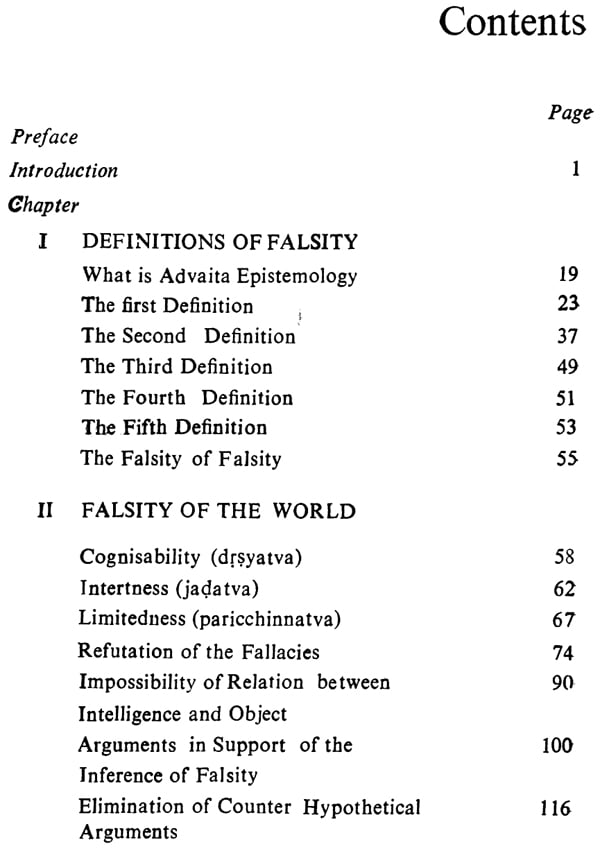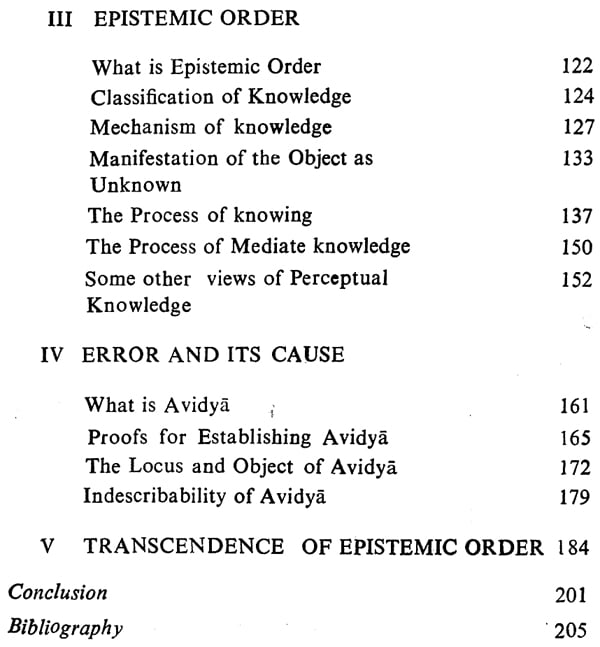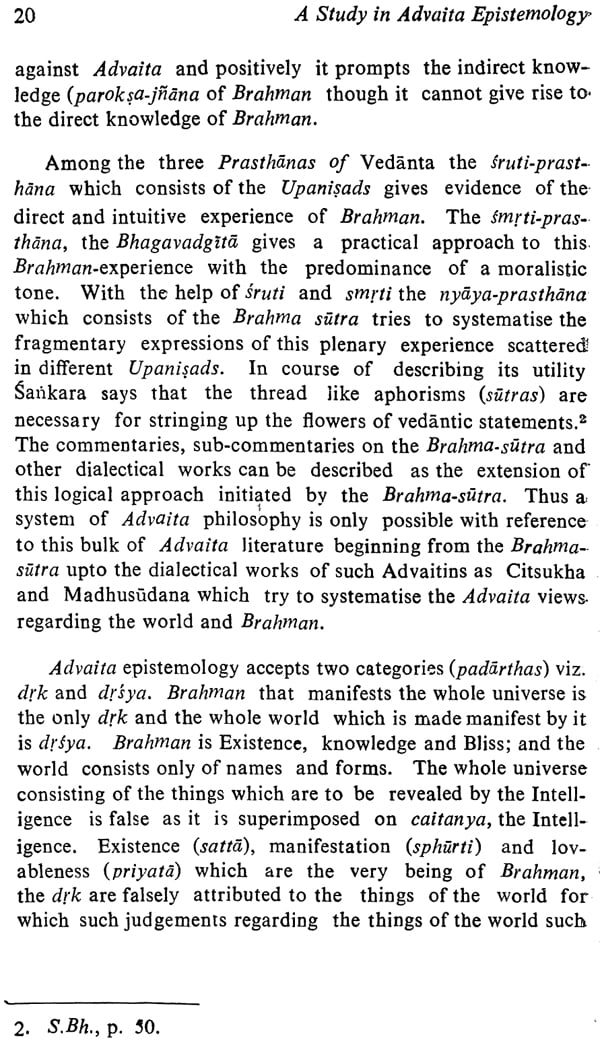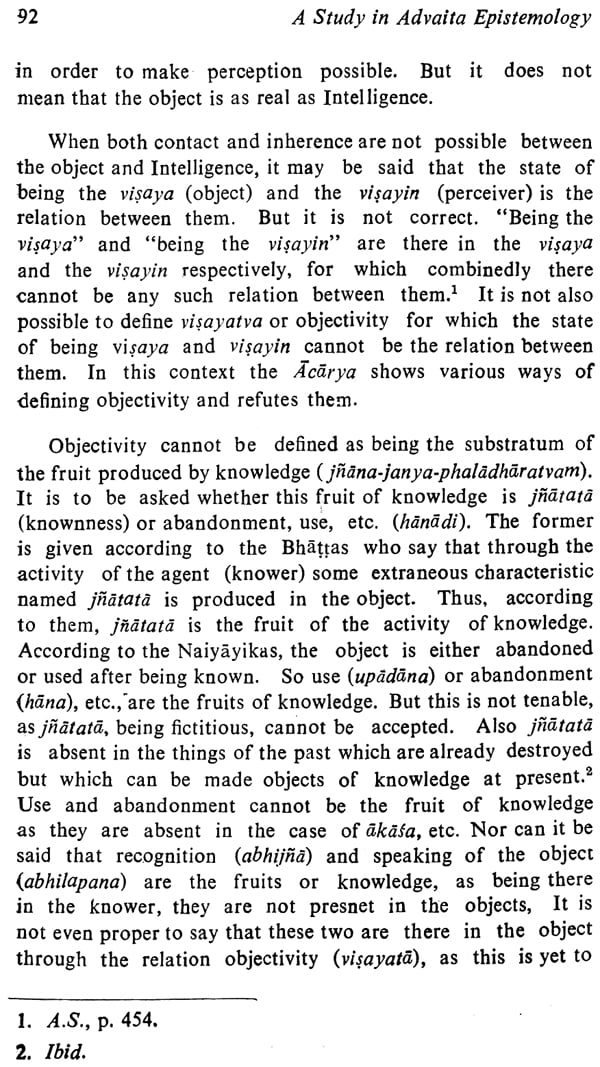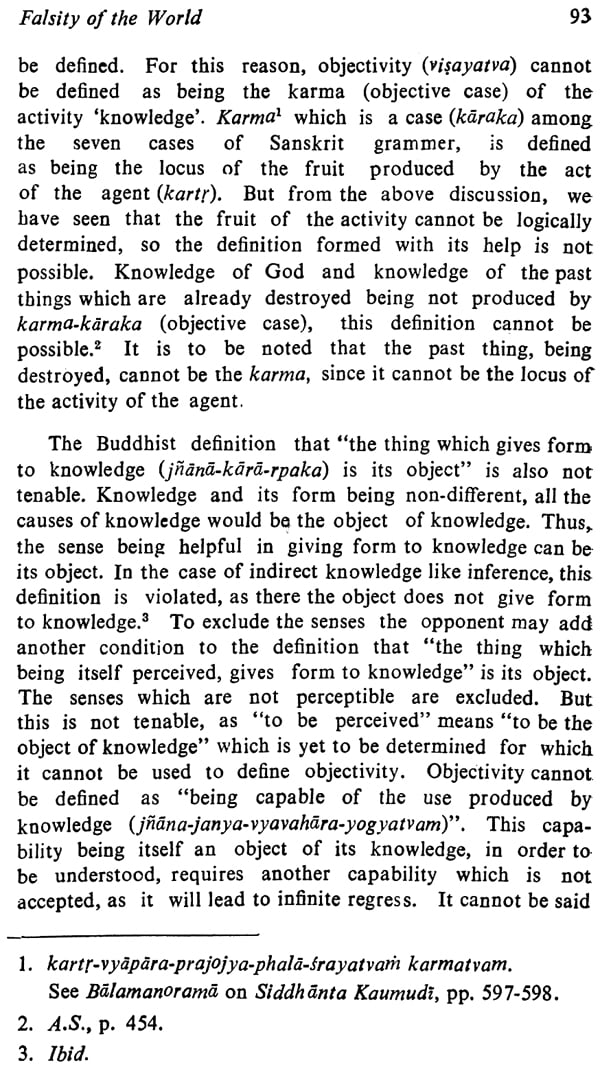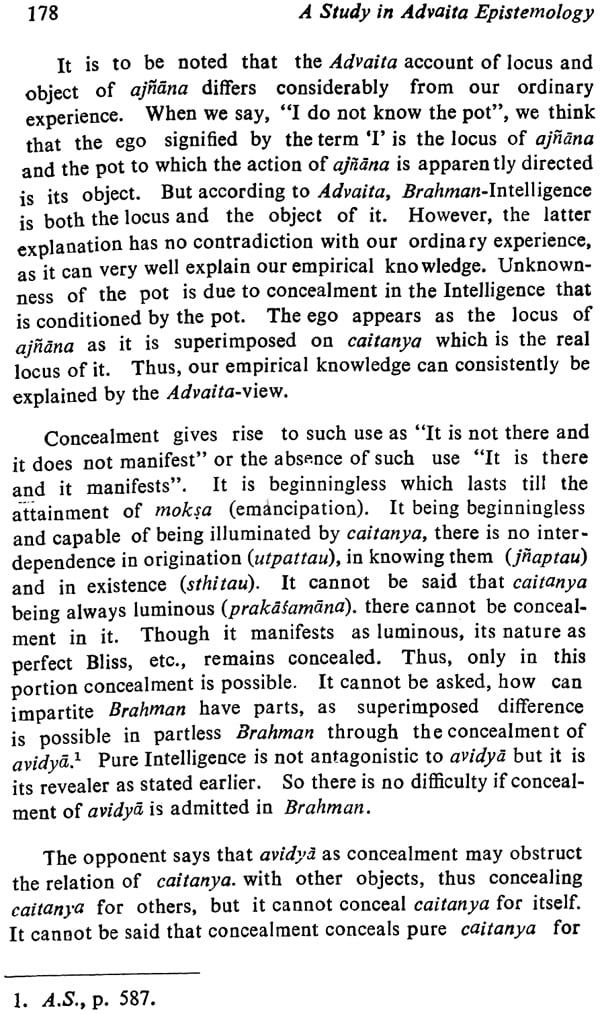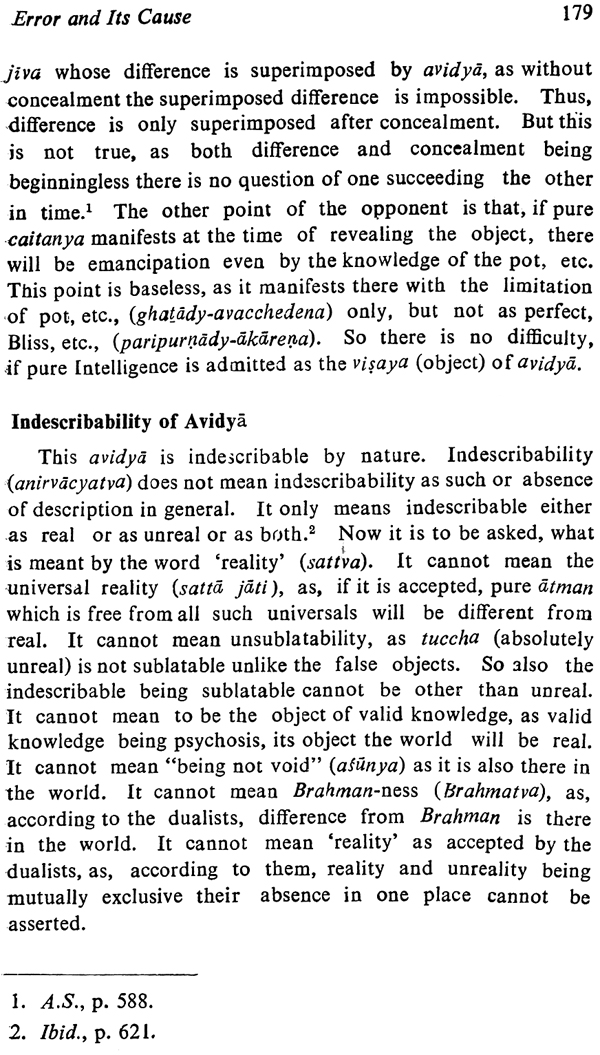
A Study in Advaita Epistemology
Book Specification
| Item Code: | NAV220 |
| Author: | Dr. Haramohan Mishra |
| Language: | English |
| Edition: | 2020 |
| ISBN: | 9788171106639 |
| Cover: | HARDCOVER |
| Other Details | 9.00 X 6.00 inch |
| Weight | 410 gm |
Book Description
This work is an attempt to present Advaita Epistemology as expounded by Madhusudan Sarasvati in his Advaitasiddhi which is said to be the last great work in the tradition of Advaita dialectics. Advaitasiddhi marks the culmination of Advaita dialectics. It reconciles apparently contradictory views of different Advaita teachers and safeguards them from the attack of the opponents.
The present work, unlike other critical works written on this subject, seeks to find out the justification of the epistemological stand-point of Advaita rather than to expound the different methods of knowledge such as pratyaksa, anumana etc., which are discussed in Vedantaparibhasa of Dharmarajadhvarindra. Following the line of interpretation of Madhusudana it is sought ot be proved that the Advaitins are only prakriyas which are formulated to prove the central truth of Advaita that the ultimate reality is one without a second.
This work attempts to present Advaita epistemology as expounded by Madhusidana Sarasvati in his Advaita Siddhi which is thought to be the last great work in the tradition of Advaita dialectics.
Like other dialecticians of Advaita, Madhusidana subjects each and every concept used by the non-Advaitins to severe criticism and shows their unsoundness. He shows that the definitions and concepts of the non-Advaitins are inconsistent, which can neither explain themselves nor the world of experience. By clarifying the concepts of reality, unreality and falsity he shows that even though the world is thought to be real in the manner the non-Advaitins conceive it, it cannot undermine the falsity of the world upheld by the Advaitins, as their conception of reality differs. The non-Advaitins who uphold the reality of the world are content with the immediate reality of the things of the world and do not question their ultimate status, whereas the Advaitins define and conceive reality from the point of view of ultimate consistency. So the functional reality—reality as conceived by the non-Advaitins—of the world is not opposed to its falsity in the ultimate sense. Thus, Advaita is not opposed to the world as it appears to our common-sense with its natural laws and orders. Unlike the agnostics, it does not hold that another noumenal world is there underlying the world of phenomena. It simply shows that the world with its diversities is not real in the ultimate sense or paéramdarthika— sat. Madhusidana employs long dialectic to prove the falsity of the world as it facilitates the understanding of non-duality. He deals with the epistemological questions in so far as they are connected with it, since he wants to {show that, though the world is false, the empirical transactions of the world are not shattered.
The Advaita conception of the ultimate reality can be appreciated only if one understands the tenability and the necessity of conceiving reality as something self-consistent. However, self-revelation and self-consistency are not abstract ideas which are arrived at through speculation or through the analysis of a pre-conceived idea of reality. It is, therefore, not proper to hold that Vedantic statement; such as ‘Brahman is Existence, Knowledge and Bliss’ are merely analytic or tautological, which have no truth-value since the analytic statements only analyse their contents. Unlike in the analytic statements, here the terms ‘Existence’ ‘Knowledge’ and ‘Bliss’ used to define Brahman are not derived from each other through the analysis of their contents. They are independent of each other in both their intention and extension. Only in so far as they are used to define Brahman they are rélated. Sankara is very clear and emphatic when he says that such terms as satya, jnana, etc., are not related by themselves since they are only meant for some- thing else (Brahman). So, they being adjectives only qualify the substantive Brahman independent of each other such as ‘Brahman is satya’, ‘Brahman is jnana’, etc.
It is to be noted that Advaita is not a system of metaphysics trying to establish some world-view through speculation. Such a view which was prevalent in the past was due to imposing some alien characteristics from the western philosophies. How- ever, it is not even proper to maintain that it aims at merely analysing philosophical language, which seeks to reach linguistic clarity and unambiguity? Indeed, Advaita texts of the later period contain the finest linguistic and conceptual analysis, but it is hardly convincing to say that it is the sole purport of Advaita Vedanta. The Advaita dialecticians are quite impartial, uncompromising and objective in their analysis of language and concepts, but their attitude is not value-neutral, since analysis, according to them, is not an end in itself. It is only a Means to achieve a clarity of understanding that prompts in- direct knowledge or paroksa jnana which is culminated in the direct knowledge of Brahman. Both speculation and analysis are employed by the Advaitins so far as they are necessary to achieve this end. For this, such theories as pratibimba and avaccheda, parinama and vivarta, etc., are said to be prakriyas.
But the foundation of Advaita is the Advaita-experience of the seers. Such an experience is not an abstract idea, nor is it a fantasy. Illustrious spiritual teachers as Sri Ramakrishna Paramahamsa and RamanaMaharsi of modern times were living examples of this experience.
Most of the works of the neo-Advaitins like Advaita Siddhi are written in the manner which was developed by the Navya- Nyaya School of Gangega. The neo-Advaitins had to adopt this because the non-Advaitins of their time levelled their criticism against Advaita in that manner and there was no Other way to counteract their criticism. Though this new method did not add anything new to the richness of Advaita philosophy, it undoubtedly gave precision and clarity to most of the concepts used by the Advaitins. The syntactic peculiarity of this new method is that most of these discussions cannot be translated exactly into intelligible English. So I have retained most of the terms in original Sanskrit and have tried to trans- late these discussions as far as they are intelligible. 1 have to adopt some new coinage of words such as absence-ness {abhavatva), substance-ness (dravyatva), Knowledge-ness) (jnanatva), etc., without which some passages in Sanskrit can- not be exactly translated into English. Since a systematic exposition of Advaita epistemology is not possible relying on one work viz., Advaita Siddhi, I have referred to other works of
It is apparently a simple fact that we know, but how we know really or what makes this knowing possible is not so simple as it seems to be. More complicated are even the problems, whether our knowledge regarding different objects is true or false; whether the objects we know are real or unreal etc., which bewilder even the most rational of the men with complexity of facts and multiplicity of answers given by different thinkers who try to contradict each other’s thesis. All these diverse views with their arguments and counterarguments seem to even a little discerning mind to be beset with absurdities and limitations. All systems are limited. All methods are only applicable within their respective boundaries. The world of objects is too manifold and perplexing to be comprehended by any such method and system. It is as the great Advaita-teacher Vidyaranya says, ‘‘Even though all the learned men try to determine the nature of the world, ignorance confronts them at some stage or other’. So it is declared as Maya which is indeterminable (anirvacaniya). All the systems are partial and no system is capable of accounting for the world in its entirety. However, human quest and curiosity cannot be satiated with merely a sceptical or agnostic end. Nor can utilitarianism restrain it from seeking after the ultimate. In spite of the attempts made by some pragmatists and utilitarian to limit it to ordinary human experience, this quest for something more remains intact. While great sciences endeavour to find out the principles underlying the things of the phenomenal existence, great philosophies have attempted to explain the ultimate basis of them. Till now the quest of science is limited to the material world. The philosophical systems, on the other hand, are fraught with contradicting ideas. Different philosophical systems devise different methods to understand and explain the world of experience according to their peculiar world-views. Still the problem eludes all such methods and categories.
Advaita epistemology, unlike other systems of philosophy, does not aim at establishing a method or some methods of knowledge. It admits the limitations of intellect as well as the indeterminable character of Maya& which appears as the phenomenal world. Systems, methods, concepts and categories are applicable within a specific level. So attempt at systematisation necessarily limits itself. The dialectical method which the Advaitins adopt to criticize the opponent’s views and the conclusions which they arrive at make it clear that Advaita epistemology is not conclusive but suggestive. It does not aim at establishing a method of knowledge but tries to go beyond all methods. Instead of explaining only the problem of knowledge it tries to transcend all such explanations and find out their root which needs no further explanation. To quote T.M.P. Mahadevan, ‘"‘The purpose for which a study of the problem of knowledge is undertaken is not to solve the problem but to go beyond it. The empirical situation in knowledge which demands the distinction of three factors, cognizes, cognition and object cognised does not admit of a satisfactory explanation. While the systems of philosophy that are opposed to Advaita imagine that they have offered an explanation, Advaita shows that the problem is inexplicable on the level of relative experience. When this level is transcended in the plenary non-dual experience, there is no longer any problem to be solved. Any epistemological analysis can be useful only in so far as it makes us become awake to this truth’’.
In view of this Advaita cannot be classified as a system of metaphysics amongst other rival systems. It cannot be limited to what we call philosophy. It is the symbolic name of the principle of non-duality and plenary experience which is beyond all conflicts and contradictions. A philosophical System presents a specific view of the world of experience which it tries to justify through reasoning and speculation. A system has necessarily a point of view to maintain; so necessarily there is conflict with other systems. But the truth which Advaita stands for is based neither on speculation nor on reasoning. It is self-valid, self-sufficient and the fundamental basis of all, which sustains and gives value to all.
**Contents and Sample Pages**
